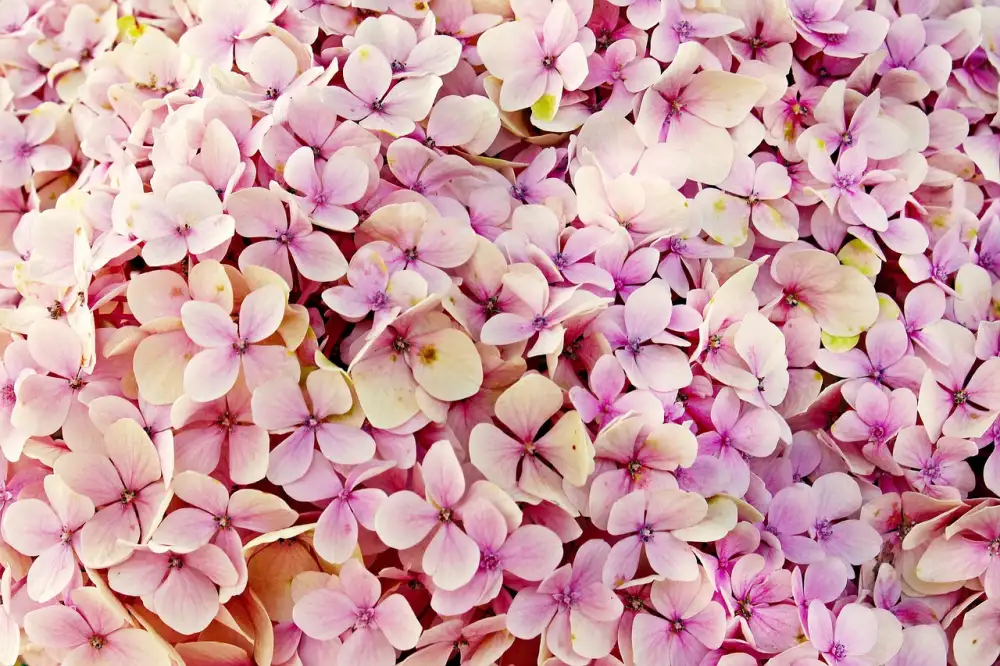Mastering Hydrangea Care: Essential Tips for Thriving Blooms at Home

Hydrangeas are popular ornamental shrubs known for their large, showy blooms in various colors such as blue, pink, purple, and white. They thrive in temperate climates and are relatively easy to care for, making them a favorite among gardeners. With over 70 different species, hydrangeas offer a wide range of sizes and shapes to suit different garden styles. These versatile plants can be grown in gardens or containers, adding beauty and charm to any outdoor space.
Choosing the Right Location
Choosing the right location is crucial for the health and vitality of your hydrangeas. These plants thrive in well-drained soil that is rich in organic matter. Select a spot with partial shade, as too much direct sunlight can cause the blooms to wilt. Additionally, make sure the location offers protection from strong winds, which can damage the delicate petals. By providing the ideal environment, you can ensure that your hydrangeas will flourish and produce stunning blooms throughout the season.
Watering Hydrangeas
Watering hydrangeas is crucial for their health and blooming success. These plants prefer moist, well-draining soil to thrive. It's important to water deeply, ensuring the root ball is thoroughly soaked. During hot weather, hydrangeas may need more frequent watering, typically 1-2 inches of water per week. Avoid overhead watering to prevent leaf diseases; instead, use a soaker hose or drip irrigation at the base of the plant. Mulching around the base can help retain moisture and regulate soil temperature. Remember, consistency is key when it comes to hydrangea hydration.
Fertilizing Hydrangeas
Fertilizing hydrangeas is crucial for promoting healthy growth and vibrant blooms. It is recommended to fertilize hydrangeas in early spring before new growth appears and again in late spring or early summer. Use a balanced, slow-release fertilizer specifically formulated for flowering shrubs. Avoid high-nitrogen fertilizers as they can promote excessive foliage growth at the expense of flowers. Additionally, consider incorporating organic matter like compost into the soil to provide essential nutrients for your hydrangeas throughout the growing season. Remember to follow the instructions on the fertilizer package carefully to prevent over-fertilization, which can harm your plants.
Pruning Hydrangeas
Pruning hydrangeas is essential for maintaining their health and promoting optimal blooming. The timing and method of pruning depend on the type of hydrangea you have. For smooth hydrangeas (Hydrangea arborescens) and panicle hydrangeas (Hydrangea paniculata), it's best to prune in late winter or early spring before new growth emerges. Remove any dead or weak stems, as well as old flower heads to encourage new growth.
For bigleaf hydrangeas (Hydrangea macrophylla) and oakleaf hydrangeas (Hydrangea quercifolia), it's recommended to prune immediately after flowering in summer. Cut back any dead or weak stems, and trim back flowering stems to a pair of healthy buds to promote next year's blooms. Avoid heavy pruning, as these varieties bloom on old wood.
Remember that improper pruning can result in reduced blooming, so always refer to specific guidelines for your hydrangea variety. Regular maintenance pruning will help keep your hydrangeas healthy and vibrant year after year.
Protecting Hydrangeas in Winter
Protecting Hydrangeas in Winter is crucial to ensure their survival and thriving blooms come spring. One key method is to mulch around the base of the plant with a thick layer of organic material, such as straw or shredded leaves, to insulate the roots from extreme cold temperatures. Additionally, consider wrapping burlap around the shrub to shield it from harsh winds that can cause dehydration and damage. In regions with particularly severe winters, constructing a simple frame around the plant and covering it with burlap or a frost cloth can provide extra protection against freezing conditions. By taking these precautions, you can help your hydrangeas withstand winter's challenges and emerge healthy and vibrant when warmer weather returns.
Dealing with Common Hydrangea Pests and Diseases
Hydrangeas are generally hardy plants, but they can still fall victim to pests and diseases. One common pest is the aphid, which can be controlled by spraying the plant with insecticidal soap or neem oil. Another pest to watch out for is the spider mite, which can be treated with a strong blast of water or insecticidal soap.
Powdery mildew is a common disease that affects hydrangeas, appearing as a white powdery substance on the leaves. To combat this, ensure good air circulation around the plant and avoid overhead watering. If powdery mildew persists, fungicides may be necessary.
Botrytis blight is another fungal disease that hydrangeas can suffer from, causing brown spots on the flowers and leaves. Remove any infected parts of the plant and ensure proper spacing between plants to improve air circulation.
By being vigilant and taking prompt action at the first sign of pests or diseases, you can help your hydrangeas stay healthy and vibrant throughout the growing season.
In conclusion, mastering hydrangea care is essential for thriving blooms at home. By choosing the right location with adequate sunlight and well-draining soil, watering consistently but not excessively, fertilizing appropriately, pruning at the right times, protecting in winter, and being vigilant against pests and diseases, you can ensure your hydrangeas flourish.
Additional tips include deadheading spent blooms to encourage new growth, mulching around the base to retain moisture and regulate temperature, and using organic pesticides sparingly if needed. Remember to research the specific needs of your hydrangea variety for optimal care. With proper attention and care, your hydrangeas will reward you with stunning blooms year after year.
Published: 14. 04. 2024
Category: Home



